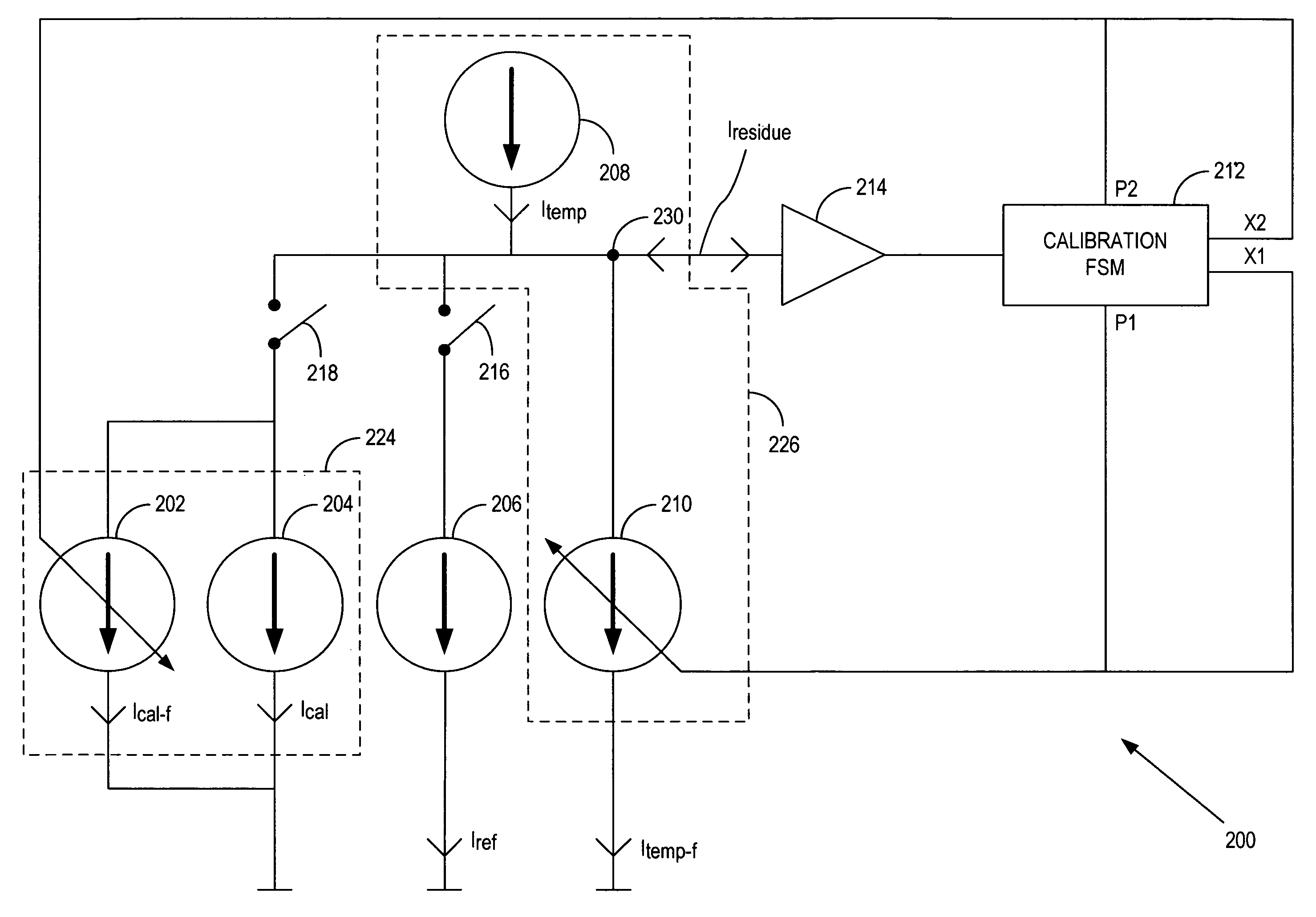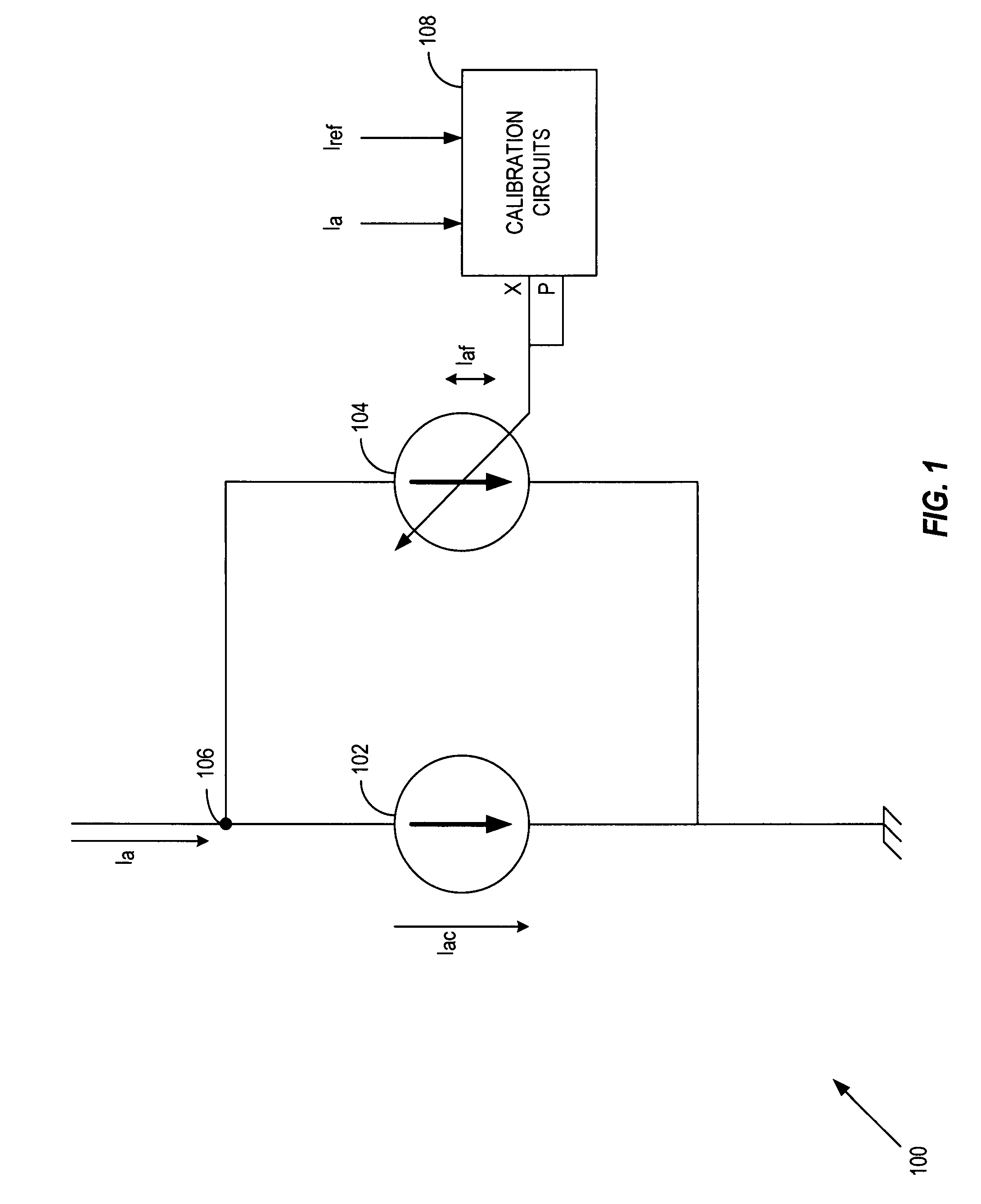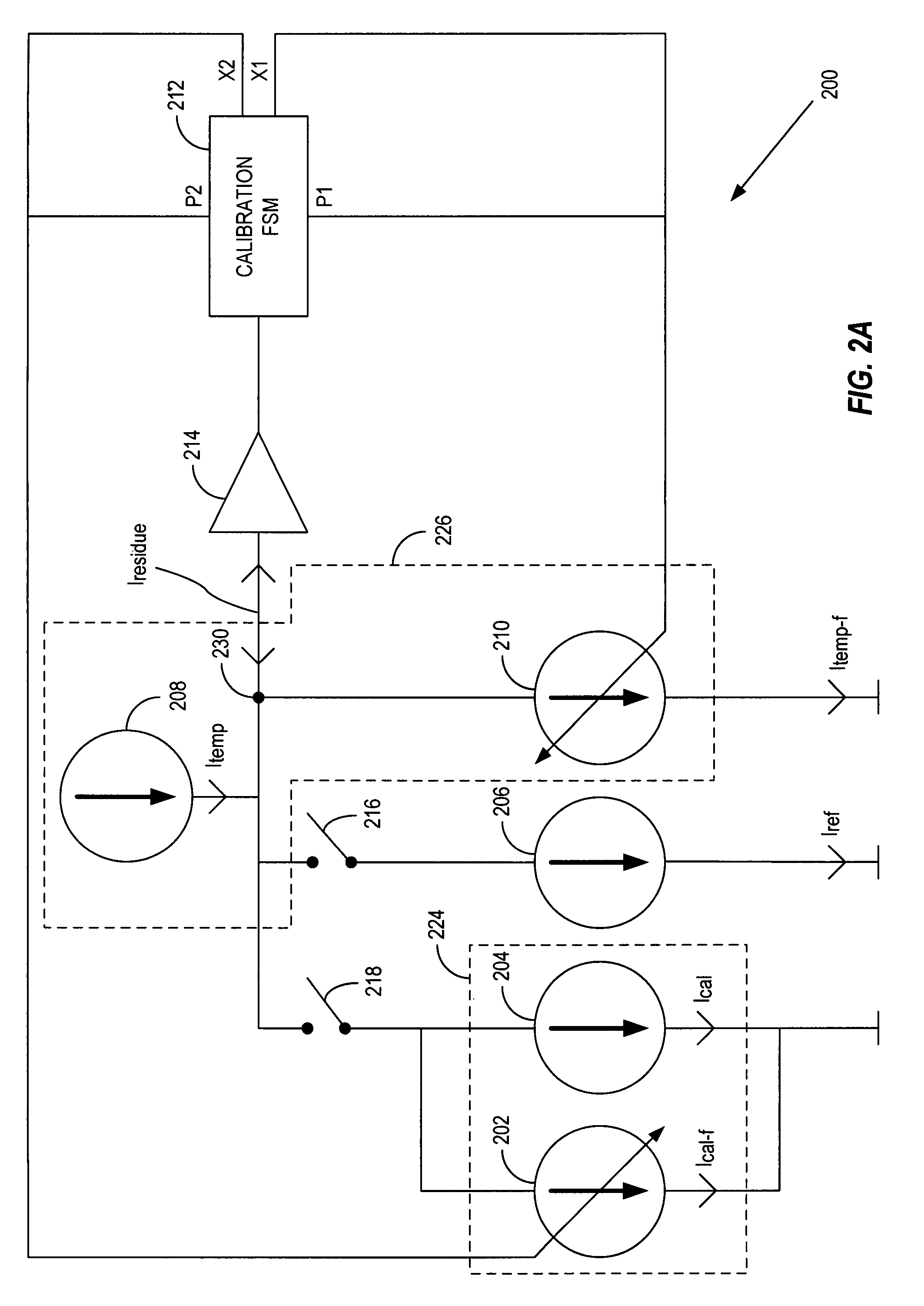Method and apparatus for calibrating a scaled current electronic circuit
a scaled current and electronic circuit technology, applied in the direction of digital-analog converters, instruments, transmission systems, etc., can solve the problems of imposing stringent accuracy requirements on both the measurement components and the calibrating elements, adversely affecting the linearity of the dac, and strong coupling of inl specification to static errors of analog components
- Summary
- Abstract
- Description
- Claims
- Application Information
AI Technical Summary
Benefits of technology
Problems solved by technology
Method used
Image
Examples
Embodiment Construction
[0030]Generally, the present invention is applied to the calibration of current cells, i.e., current sources and / or current sinks, whereby a current signal, e.g., Ia, is calibrated either to a reference current signal, e.g., Iref, or to a portion of a reference current signal, e.g., Iref. Current signal Ia may be generated by either a thermometer current source or sink, or a binary current source or sink.
[0031]If generated by a binary current source / sink, then the binary current source / sink should have at least two nominally identical replicas. The current generated by each replica is calibrated, whereby the calibrated current generated by the first current source / sink replica is substantially equal to the calibrated current generated by the second current source / sink replica. Further, the sum of both current source / sink replicas is calibrated to be substantially equal to one half of either a more significant, previously calibrated current source / sink or the reference current Iref. ...
PUM
 Login to View More
Login to View More Abstract
Description
Claims
Application Information
 Login to View More
Login to View More - R&D
- Intellectual Property
- Life Sciences
- Materials
- Tech Scout
- Unparalleled Data Quality
- Higher Quality Content
- 60% Fewer Hallucinations
Browse by: Latest US Patents, China's latest patents, Technical Efficacy Thesaurus, Application Domain, Technology Topic, Popular Technical Reports.
© 2025 PatSnap. All rights reserved.Legal|Privacy policy|Modern Slavery Act Transparency Statement|Sitemap|About US| Contact US: help@patsnap.com



